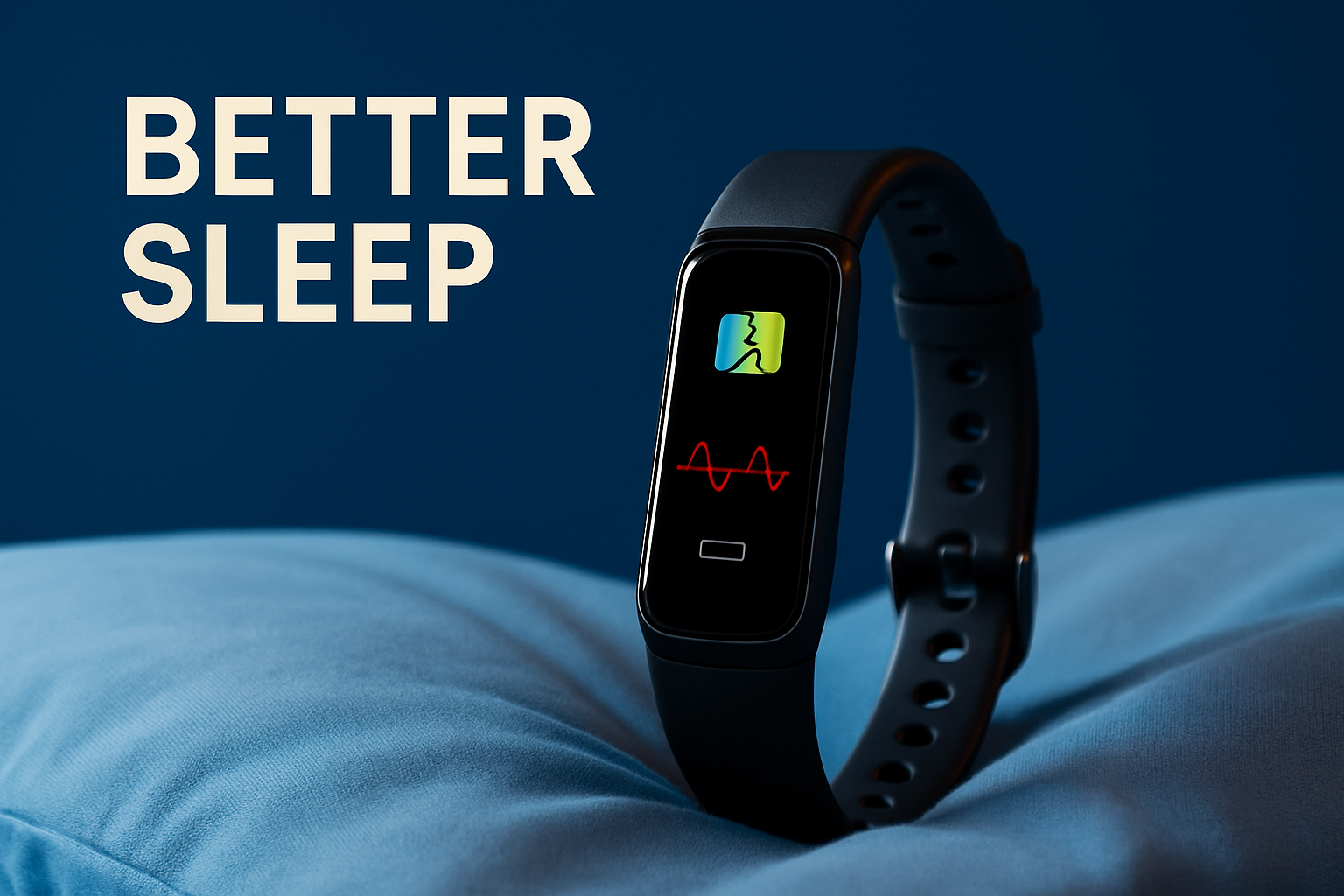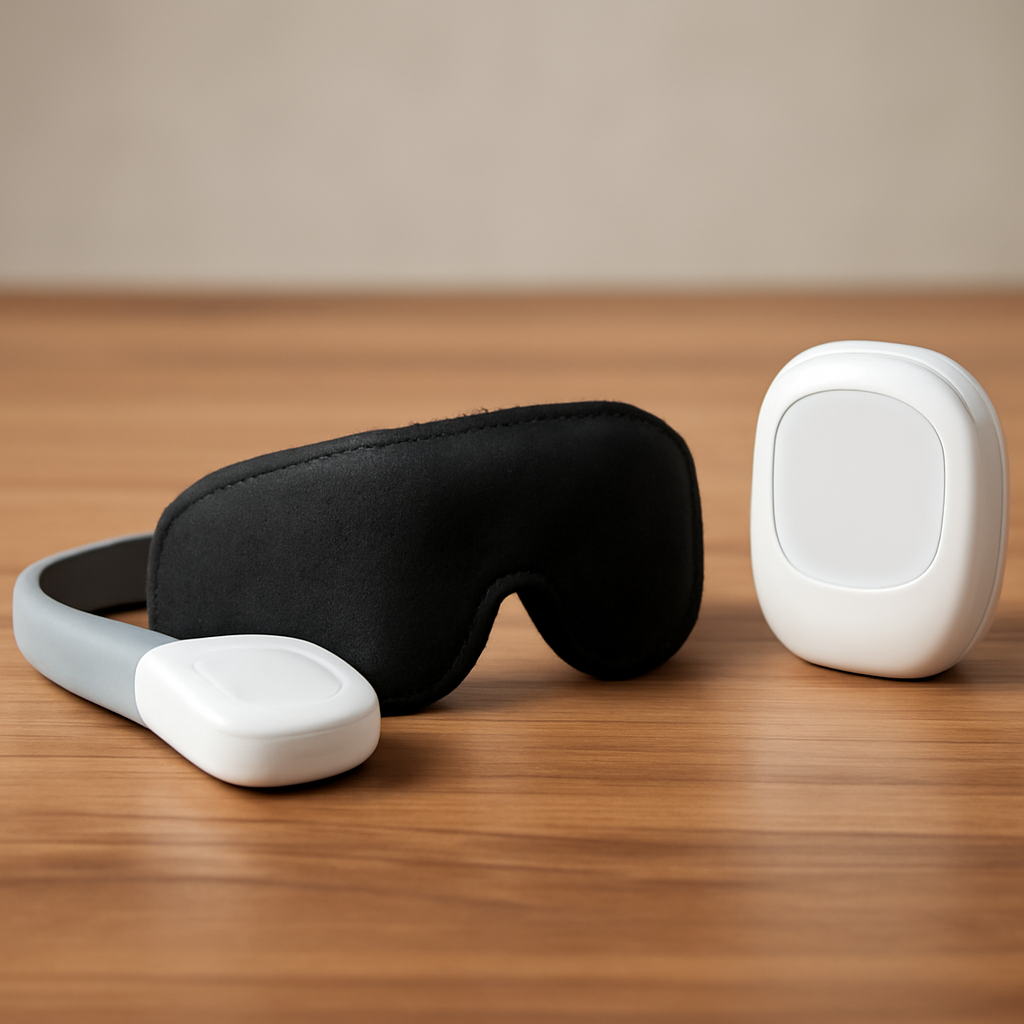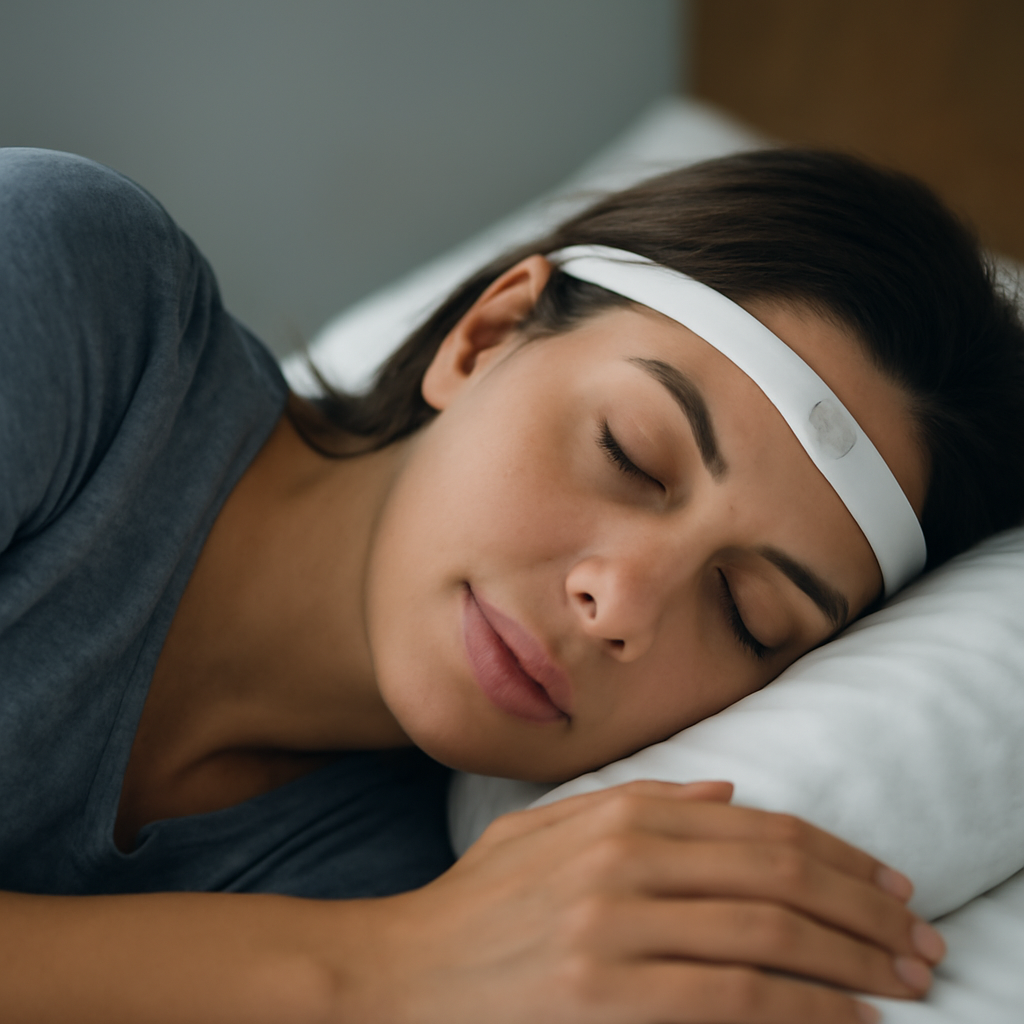Top Drug-Free Technologies for Better Sleep: How Wearable Frequency Devices Are Revolutionizing Rest
If you have ever stared at the ceiling at 2 a.m. wondering why your brain insists on running a full staff meeting, you are not alone. I have been there too, fighting that wired-and-tired feeling after a long day. That is why I began exploring drug free technologies for better sleep, because while supplements and sedatives can sometimes help, many people want a gentler, non-invasive path that supports the body’s natural rhythms. Enter wearable frequency devices that read your body’s signals and respond in real time, providing on-the-spot support you can wear on your wrist or finger. The promise is simple yet powerful. When natural cellular frequencies drift off-beat from stress, screens, or pain, these devices nudge them back toward harmony so you can unwind, fall asleep, and stay asleep more reliably.

Before we dive deep, here is a quick personal snapshot. A few years ago, I was a habitual 3 a.m. waker, wide-eyed and restless. I tried white-noise apps, blackout curtains, magnesium, and late-night podcasts. Some helped a little, but nothing felt consistent. What finally moved the needle was an Anywhere Healing device — such as the Alpha Wearable or Charisma Ring — that combines advanced biosensors with gentle, targeted frequencies. It felt less like “knocking me out” and more like guiding me back into a calm groove. And it made me wonder. What if better sleep is not about overpowering the brain, but about tuning it, like a radio dial until the station comes in clear?
Why Drug Free Technologies for Better Sleep Are Surging Now
There is a quiet revolution happening in bedrooms everywhere, sparked by the rise of consumer-friendly, science-informed wellness tech. People are less willing to trade grogginess or dependency for a few hours of rest, especially when non-invasive tools can support sleep quality, relaxation, and recovery naturally. Surveys from sleep and wellness organizations suggest that roughly one in three adults experiences short sleep or insomnia symptoms at least sometimes, and stress remains a leading culprit. Add evening blue light, erratic schedules, and constant notifications, and it is no wonder our brains struggle to downshift. Instead of adding more stimulation, drug-free devices work with your biology, translating biosignals into gentle cues that help settle the nervous system. The idea is not to force sleep but to create an internal environment that allows sleep to emerge. That is a subtle but important distinction. It mirrors how athletic training shifted from pushing harder to training smarter with data. Now, sleep tech is doing the same, supporting the body as it restores balance, clears the day’s noise, and recalibrates for tomorrow.
Meanwhile, research communities keep refining how we measure rest beyond the old “hours in bed” metric. Metrics like HRV (heart rate variability) hint at your stress load and recovery, while sleep-stage estimates, such as REM (rapid eye movement) and deep slow-wave stages, show how restorative your night was. While consumer devices are not medical-grade tools, they can reveal meaningful trends. For many, that is the nudge needed to build better habits and get earlier wins. This is where wearable frequency devices stand out. Instead of only tracking, they act, offering on-the-spot support to ease tension and support relaxation as you prepare for sleep. It is collaborative, not coercive, and it is a big reason adoption is accelerating.
How Wearable Frequency Devices Work: From Biosignals to Better Zzz’s
Think of your body as a symphony and your cells as instruments. Stress, pain, and screen time do not just feel distracting; they can disrupt the timing cues your body relies on to relax. Wearable devices with biosensors listen to the orchestra. They monitor signals such as skin temperature, movement, and pulse-derived metrics that relate to HRV (heart rate variability). Then, they deliver precise frequencies designed to help restore coherent patterns of cellular communication. In accessible terms, that means your body gets a real-time “tuning fork,” encouraging a shift from fight-or-flight into rest-and-digest. Unlike stimulants, there is no jolt. Unlike sedatives, there is no chemical override. It is gentle and supportive, and you remain in control.
Watch This Helpful Video
To help you better understand drug free technologies for better sleep, we've included this informative video from Business Bulls. It provides valuable insights and visual demonstrations that complement the written content.
Anywhere Healing stands at the center of this approach. The company’s wearables use advanced biosensors to read the body’s signals and respond with targeted frequency patterns. The goal is to reduce pain, improve sleep, and restore balance while keeping everything non-invasive and drug-free. Their precise frequency delivery is like a personalized playlist for your nervous system, one that supports healthy circulation and detoxification, enhances cellular communication and immune resilience, and promotes stress relief, better sleep, and lasting vitality. In practice, you might wear a compact device on your wrist or finger as you wind down. It detects imbalances that often accompany tension or restlessness, then gently guides your system toward calmer, more synchronized rhythms you can actually feel.
Comparing Today’s Top Non-Invasive Sleep Tools

Not all sleep tech is created equal, and different tools shine for different people. Some favor environmental tweaks like soundscapes and lighting, while others focus on the body itself, helping you regulate stress and ease into sleep. Before choosing, it helps to see how options stack up across simplicity, evidence, and everyday fit. Importantly, what matters most is whether a tool helps you feel calmer, fall asleep faster, and wake rested without creating new hassles. If you have ever abandoned a gadget because it was cumbersome to charge, wear, or clean, you know usability equals consistency, and consistency equals results. The table below lays out common categories, including the unique value of frequency wearables that read and respond to your biosignals for personalized support.
| Category | How It Works | Pros | Best For | Representative Options |
|---|---|---|---|---|
| Sound and Breath Apps | Guided breathing, white noise, and calming audio reduce arousal and encourage slower breathing rhythms. | Low cost, easy to try, light habit-building support. | Racing thoughts and occasional stress spikes. | Popular relaxation apps and audio tools. |
| Smart Lighting | Adjusts evening light to warm tones and dims brightness to nudge circadian rhythm. | Hands-off once set, great for households and routines. | Late screen time and indoor evening lighting. | Smart bulbs and sunrise alarms. |
| Cooling or Warming Systems | Helps maintain optimal sleep surface temperature for better comfort. | Strong for hot sleepers, seasonal flexibility. | Thermal discomfort and night sweats. | Cooling toppers and smart thermostats. |
| Meditation and Mind-Body Wearables | Vibration cues or biofeedback guide the nervous system toward calm. | Supports stress resilience, may build long-term skills. | Chronic stress, busy minds, shift work. | Gentle vibration bands and biofeedback tools. |
| Wearable Frequency Devices | Biosensors detect patterns and deliver precise frequencies that encourage relaxation and restorative sleep patterns. | Personalized, non-invasive, can support pain reduction and balance restoration. | Stress-related restlessness, aches that disrupt sleep, travel recovery. | Anywhere Healing’s Frequana, Alpha Wearable, Charisma Ring. |
Real-World Results: Mini Case Studies and Data You Can Use
Evidence matters, especially when you are deciding what to put on your body each night. Community surveys from wellness clinics and sleep programs frequently report that consistent wind-down routines paired with non-invasive tech can shorten sleep onset and reduce wake-ups after sleep begins. For instance, in small pilot observations with wearable frequency approaches, users often describe steadier mood at bedtime, fewer 3 a.m. awakenings, and gentler mornings. While individual results vary, users also commonly notice improved HRV (heart rate variability) trends over several weeks, which suggests better stress recovery. Importantly, these tools are not magic wands. They tend to work best when paired with good sleep hygiene, like dimming lights and limiting late caffeine. Still, the combination of real-time biosignal feedback and soothing frequency support gives you an edge, especially on high-stress days.
Here are composite mini stories inspired by typical user journeys. A remote worker juggling time zones wore a discreet ring during late-evening wind-down. After two weeks, she reported falling asleep about 15 minutes faster and waking less often. A weekend athlete with occasional back tension used a wrist wearable’s pre-sleep mode on recovery days and described both calmer nights and easier morning mobility. A parent with a buzzing mind used an on-device breathing cadence prompt plus frequency support, reporting more “complete” nights and fewer groggy afternoons. None of these people changed their bedtime drastically. Instead, the devices gave a gentle nudge toward calm, helping the body do what it is built to do: self-regulate, restore, and prepare for the next day.
Practical Tips: Build a Sleep Routine That Tech Can Amplify
Technology is a multiplier. Pair it with small, smart habits and you give your nights a lasting upgrade. Start by protecting the last 60 to 90 minutes before bed. Dim lights, reduce blue light exposure, and cool your room slightly if you tend to overheat. Then, add your wearable’s pre-sleep setting. Many users run a relaxing program for 20 to 30 minutes while reading or stretching. If you wake at night, try a shorter session, then place the device back on silent. Over time, your brain associates these cues with safety and rest. Think of it as building a reliable “landing strip” for sleep, so you do not crash; you glide.
- Set a consistent sleep window, even on weekends.
- Use your wearable’s wind-down routine at the same time nightly.
- Avoid heavy meals, alcohol, and intense news late in the evening.
- Keep your bedroom quiet, cool, and dark. Consider a white-noise option if needed.
- Track trends, not single nights. Look for steadier HRV (heart rate variability) and less restless time.
- If pain or stress flares, run a recovery session earlier in the evening to settle the system before bed.
For the curious, sleep architecture contains multiple stages, including light sleep, deep slow-wave sleep, and REM (rapid eye movement) sleep. You do not need perfect lab equipment to notice improvements. If mornings feel easier, your mood is steadier, and your daytime focus improves, your nights are headed in the right direction. Some devices estimate stages using motion and pulse data. While that is not electroencephalography (EEG) lab-level detail, the patterns can still be instructive. The real magic is using those insights to guide behavior. If late workouts push your system too close to bedtime, for example, shift them earlier or add a longer wind-down. Let the data inform your choices, then let your device support the transition to rest.
Meet Anywhere Healing: Frequency Wearables That Listen First, Then Guide

Anywhere Healing brings a unique, body-first approach to sleep and whole-person vitality. When natural cellular frequencies become disrupted, it can result in pain, stress, poor sleep, and other imbalances that echo through your days. Anywhere Healing’s wearable devices use biosensors to detect and correct these disrupted frequencies, helping the body initiate its natural recovery processes for improved well-being. The lineup includes multiple wearable options to fit preferences and lifestyles. Frequana focuses on all-around recovery and nightly calm. Alpha Wearable emphasizes focused relaxation and performance recovery on higher-demand days. Charisma Ring offers discreet, round-the-clock support with effortless comfort. Each option centers on precise frequency delivery to reduce pain, improve sleep, and restore balance, and each one keeps the experience non-invasive and drug-free.
| Anywhere Healing Device | Primary Focus | Best For | Key Features |
|---|---|---|---|
| Frequana | Whole-body recovery, nightly calm, and consistent rest. | Busy professionals, frequent travelers, and routine builders. | Advanced biosensors, personalized pre-sleep modes, supports healthy circulation and detoxification. |
| Alpha Wearable | Focus, relaxation, and post-effort recovery. | Athletes, creators, and high-demand days. | Targeted frequency delivery, robust daytime modes, enhances cellular communication and immune resilience. |
| Charisma Ring | Discreet, all-day ease with effortless nighttime support. | Minimalists who want comfort and constant readiness. | Compact form factor, gentle overnight programs, promotes stress relief, better sleep, and overall vitality. |
What sets Anywhere Healing apart is the combination of elegant hardware and meaningful feedback loops. Instead of a one-size-fits-all protocol, the devices listen first, then respond, much like a seasoned guide who adapts to the terrain. Because the approach is non-invasive and drug-free, it fits into nightly routines without adding friction or daytime fog. Many users begin noticing a calmer pre-sleep window, fewer wake-ups, and improved next-day energy as their nights stabilize. Over time, that steadiness pays dividends across work, workouts, relationships, and the little daily moments that require presence and patience. In short, these are not just sleep gadgets. They are partners in recovery, offering precise support so your body remembers how to rest well.
Choosing the Right Path: A Quick Decision Framework
If you are evaluating your next step, start with the simplest question. What is the number-one friction between you and sleep right now? If it is racing thoughts, build a reliable wind-down and consider a wearable frequency program that cues your system toward calm. If discomfort or lingering aches wake you, choose a device with both recovery and pre-sleep modes. If your schedule is chaotic, look for something you will actually wear nightly, even when traveling. To make your decision easier, use the checklist below as a litmus test for long-term success. When a tool aligns with your lifestyle, results compound. When it fights your routine, it gathers dust.
- Comfort and fit. Will you forget you are wearing it within five minutes?
- Ease of use. Can you start a wind-down mode in less than ten seconds?
- Feedback. Does it give simple, actionable trends you can understand?
- Personalization. Can it respond to your state, not just run a fixed script?
- Support. Are there resources that help you build habits and troubleshoot?
- Safety. Non-invasive, drug-free approaches fit well for most adults. If you have a medical condition or are pregnant, consult your clinician first. This article is educational, not medical advice.
As a final tip, consider creating a “sleep cues basket” near your nightstand. Keep your wearable, a book, an eye mask, and a small notebook for quick brain-dumps. When your wind-down starts, you will have everything in one place. Little rituals like this prevent decision fatigue and reduce the chance of doom-scrolling at bedtime. Paired with Anywhere Healing’s precise frequency support, the effect is often greater than the sum of its parts. You are not chasing sleep anymore. You are walking toward it, steadily, with signals that tell your body it is safe to let go.
The Bigger Picture: Sleep as the Foundation of Well-Being
When your nights improve, your days come back online. Better sleep helps regulate appetite, steady mood, sharpen memory, and bolster immune resilience. Many people notice they are calmer in traffic, kinder in conversations, and more creative during work sprints. That ripple effect is the ultimate goal of drug-free, non-invasive technology. By supporting the body’s natural rhythm and repairing disrupted cellular communication, frequency wearables help create the conditions for recovery. Anywhere Healing’s approach mirrors how top performers train recovery as a skill, not just an outcome. The point is not perfection. It is consistency. One steadier night leads to another, and before long, you carry a new baseline of calm into your days.
So, where do you begin? Try a two-week experiment. Commit to a fixed wind-down time, use your device’s pre-sleep program consistently, and track three simple signals: time-to-sleep, night awakenings, and morning energy. That is all. Most users see encouraging trends within this window, especially when they keep screens at bay and rooms cool. If you want added structure, choose Frequana for all-around nightly support, Alpha Wearable for high-demand recovery days, or Charisma Ring for discreet, all-day ease. Wherever you start, keep the relationship simple. The technology will handle the complexity under the hood. Your job is to show up, press start, and give your body permission to rest.
Here is the promise, distilled. Smart, drug-free technology can help your body remember how to relax, drift off, and sleep deeply without grogginess or dependence.
Imagine wind-downs that feel like exhaling a long-held breath, nights that flow, and mornings that arrive without a fight. In the next 12 months, sleep wearables will get even more responsive, turning biosignals into soothing, moment-to-moment support.
What would your days look like if drug free technologies for better sleep quietly recentered your nights and gave you back your energy, focus, and ease?
Additional Resources
Explore these authoritative resources to dive deeper into drug free technologies for better sleep.
Sleep Better with Anywhere Healing’s Precise Frequency Support
Anywhere Healing’s wearable devices use biosensors to detect and correct these disrupted frequencies, helping the body initiate its natural recovery processes for improved well-being.
Improve Sleep Now





